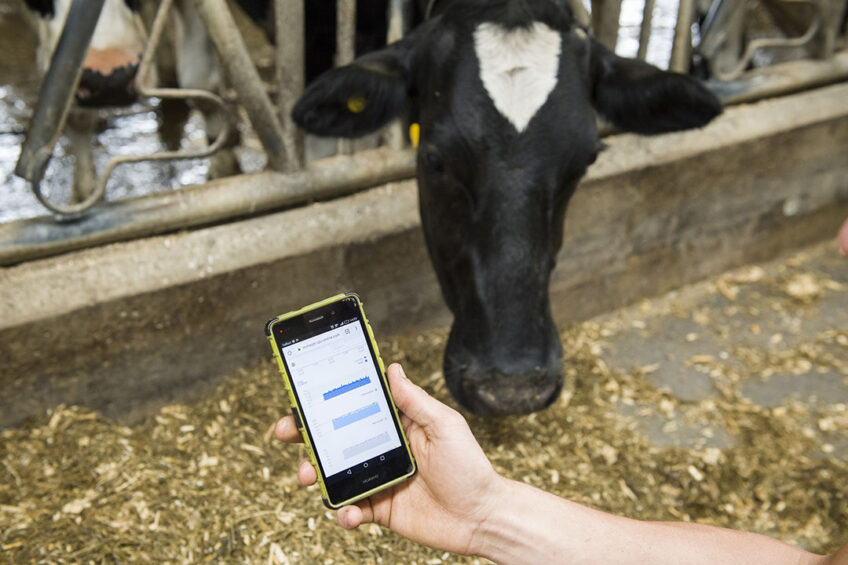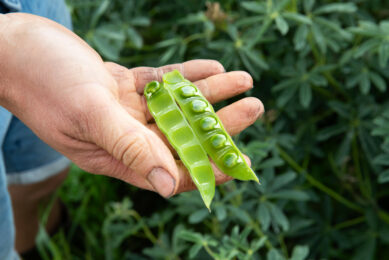Change in feeding: Test the results with sensors

Sensors can help to understand the effects of a change in feeding management. This way, farmers know if a management change is an improvement.
Dairy farmers always thrive to improve the farm, but how do you know if a management change is an improvement? The Plan-Do-Check-Act (PDCA) cycle is a very common way for continuous improvement used in many industries. The dairy industry is no exception. You identify a problem, test a potential solution, check the outcome of this solution and implement it if the outcome is positive. This sounds simple right? But a thorough check is not always easy, especially if the outcome is not immediately available. For example, if you change something in your dry cow pen to improve production you will have to wait 2 to 3 months before you can check this. Your cows however can tell you earlier if they think the change is an improvement. Sensors can help you with that. Let’s take a closer look at a real-life example of a change in feeding management.

Trying a new mixer wagon
A farmer was not happy with his current feeding management. Cows were heavily sorting, it was very busy at an already overcrowded feed bunk around feeding. On top of that, production of the heifers was lower than expected. He was not mixing his ration and he identified this as the source of his problem. Therefore, the potential solution he tested was to try a new mixer wagon and to start feeding a mixed ration. He got one on trial for 14 days. But then what’s next? How do you check if mixing was an improvement? Of course, milk production is an important parameter but it takes some time before you see this change. And you probably want some details about feeding behaviour. You can watch what is happening around feeding, manually check the ration for sorting, etc. All of that is still pretty subjective. It can give you some ideas but real data from your cows can help you make a better-informed decision. In this situation, sensor data was used to check feeding and lying.
Feeding and lying behaviour
The effect of mixing the feed was checked based on the average eating, rumination and lying time of the animals. The first week of the trial was considered a learning period, where the animals got used to the new way of delivering the feed. The testing period was the second week of the trial. Data from this week was compared with the week before the start of the trial (Figure 1).
What we see very clearly is that the cows spend around 45 minutes per day less at the feed bunk. In itself this would not indicate a positive change. However, remember this farmer has an overcrowded feed bunk and he noticed heavy sorting when feeding a non-mixed ration. So, a reduction in eating time is not necessarily undesirable. The farmer himself noticed less sorting behaviour when feeding the mixed ration. A nice example of the power of combining change in cow behaviour and own experience to better understand what is happening. Rumination time shows a slight increase of around 10 to 15 minutes. Although the cows spend less time at the feed bunk they have similar rumination time. That again shows that the lower eating time for this trial is probably not very bad. Most likely the cows spend less time sorting and therefore require less time to consume their meals. Lying time shows an increase of half an hour per day to almost 12 hours per day. That is positive. Cows need to spend enough time lying as shown in a previous article.
What is happening at the feed bunk?
Another thing to look at is whether the feed bunk is less crowded around feeding. The percentage of cows at the feed bunk per hour of the day was used to check this. Figure 2a has the results. Red means a high percentage of cows at the feed bunk. The effect of mixing is clearly visible. Feeding time is around 11am and with a non-mixed ration a high percentage (intense red colour around 11am) of the cows is at the feed bunk. They know that fresh non-mixed feed means that everything they prefer is there. This means that all the dominant cows go to the feed bunk when fresh feed is delivered.
Figure 2a – With a non-mixed ration the feed bunk is crowded (intense red color) around feeding time (11AM).

With a mixed ration after just 1 week we already see a difference in feed bunk presence. The feed bunk is much less crowded at feeding time. This is desirable because the cows now know there is not much to sort so they are less triggered to go to the feed bunk. Of course, fresh feed is a trigger to visit the feed bunk but this is now more evenly distributed throughout the day. Combining all of this info we can see that the cows show desirable changes in behaviour. Less busy at the feed bunk around feeding, less sorting behaviour are 2 of the issues the farmer wanted to resolve with a mixed ration. With sensor data we can show that this happened (Figure 2b). And with sensor data we can also show that the cows still show similar rumination time and an increased lying time. That is a desirable change.
Figure 2b – With a mixed ration the feed bunk is less crowded (lighter red color) around feeding time (11AM).

Milk production
Now there is only the issue of heifer milk production. A 1-week trial is probably not enough for a sound conclusion about the effect on milk production. However, it might give an indication. In the week with the mixed ration, the average daily production of the heifers showed an increase of about 1 kg. The older cows did not show a difference in milk production. Again, a desirable change (Figure 3).
Farmer is positive about results
After the trial, the farmer felt positive about the effects he noticed. The sensor data showed him that the issues he had could be resolved through mixing his feed. The extra costs for mixing are lower than the anticipated benefits of the improved production. And this did not even include other benefits associated with higher lying times and better social behaviour. All and all this shows how, using sensors, your cows can tell you if a management change is a real improvement or not.
This is part 4 of a 4 part series on how sensors are making their way to dairy farms around the world and the practical application of it. Read part 1 here, part 2 here and part 3 here.
Join 13,000+ subscribers
Subscribe to our newsletter to stay updated about all the need-to-know content in the dairy sector, two times a week.










